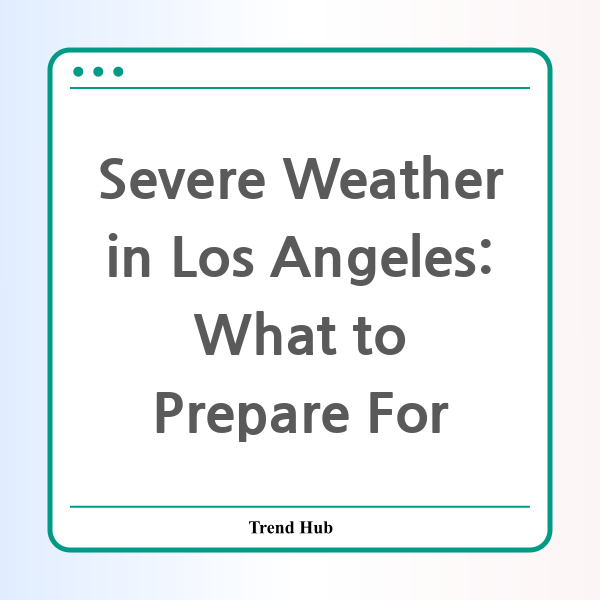* This website participates in the Amazon Affiliate Program and earns from qualifying purchases.

As one of the most densely populated areas in California, Los Angeles is no stranger to severe weather events. However, this week, the region is bracing for the strongest storm in a year, and residents need to be prepared.
Forecasters are warning that Southern California will face significant rainfall, which is poised to cause widespread roadway flooding and increase the risk of landslides, particularly in areas recently affected by destructive wildfires. This storm is expected to bring 1.5 to 3 inches of rain across much of Los Angeles, Ventura, and Santa Barbara counties, with higher totals—up to 6 inches—anticipated in mountainous regions prone to debris flows.
The heaviest rain is forecasted to begin late Thursday afternoon, potentially extending into the early hours of Friday. If you live in or near these vulnerable areas, it may be wise to consider evacuating before the storm hits. The authorities have advised against travel during the peak storm hours, emphasizing the slick roads and potential for traffic accidents.
Rainfall rates are expected to reach as high as 1 inch per hour, which can lead to dangerous conditions in already affected burn scar areas. The National Weather Service has raised alarms for the potential of debris flows, which can carry not only mud but also large rocks and other materials at dangerously fast speeds.
Here’s an overview of the expected rainfall totals for various regions:
| Location | Expected Rainfall (inches) |
|---|---|
| Downtown Los Angeles | 2.09 |
| Long Beach | 2.22 |
| Santa Barbara | 3.02 |
| San Luis Obispo | 3.82 |
| Cambria | 4.88 |
As the storm approaches, city departments are on high alert with intensified preparations. Crews have been deployed to clear catch basins and storm drains and erect barriers to mitigate the impact of heavy rainfall. Mayor Karen Bass has assured the public that resources will be pre-deployed, particularly in high-risk areas such as the Pacific Palisades and other burn scars.
It’s essential to stay informed by monitoring local weather reports and heed any advisories or evacuation orders. If you reside in high-risk areas, preparing an emergency kit and having a plan in place can be lifesaving. This kit should include essentials such as water, non-perishable food, medical supplies, and any necessary documents.
Moreover, the storm may also bring strong winds, with gusts reaching 40 to 60 mph in certain mountain and desert regions. This could lead to downed trees and power lines, resulting in brief power outages. Residents should also be cautious of potential flash flooding, especially in urban areas where drainage systems may become overwhelmed.
As we prepare for this significant weather event, staying vigilant and taking proactive steps can greatly reduce risks associated with severe storms. After the rain subsides, it’s expected that a dry spell may follow, giving residents some respite from the wet weather. However, given the current conditions and history of severe storms in the area, ongoing vigilance is essential for the safety and well-being of all Angelenos.
In conclusion, while Southern California often enjoys sunny skies, it’s crucial to respect the power of nature and prepare adequately for impactful weather events like the storm coming to Los Angeles this week. Stay safe, and remember to put safety first.
* This website participates in the Amazon Affiliate Program and earns from qualifying purchases.